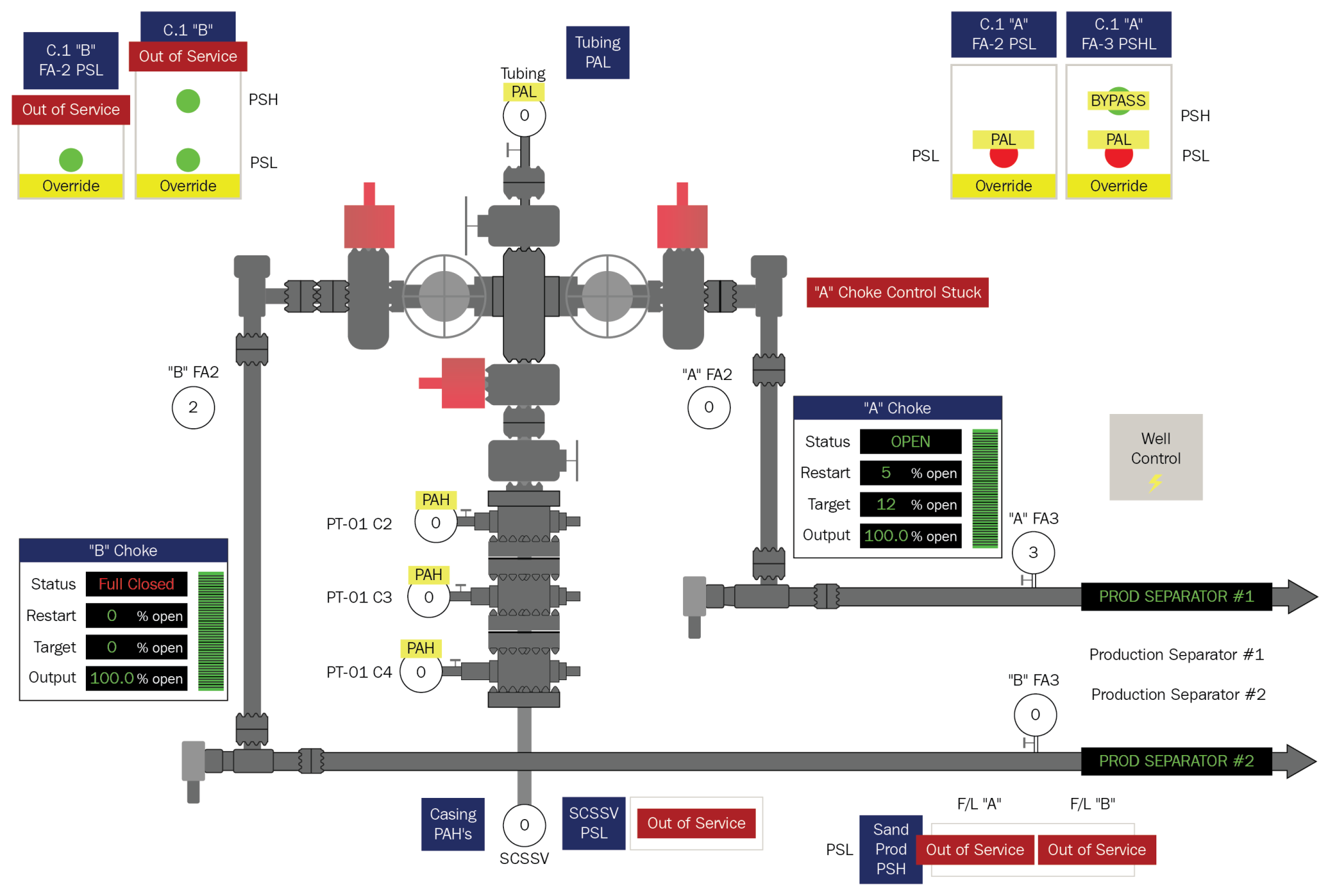When designing a GUI, it is common to sketch out what the final interface should look like. This is known as wireframing. While there are applications designed explicitly for wireframing, even something as simple as MS PowerPoint can be used.
Ideally, we would talk to the end users and figure out what they wanted in a GUI, allowing them to test each version of the software until we found the best solution. However, when it comes to a Human-Machine Interface (HMI), as GUIs for industrial applications are commonly called, the interface is pretty much dictated by the system being used.
HMIs have to show what the system looks like, much like a schematic diagram, as well as telling the operator the current system parameters and conditions. The following screenshot shows a representative example of an HMI for an industrial application:

Frequently, the HMI allows...




































































